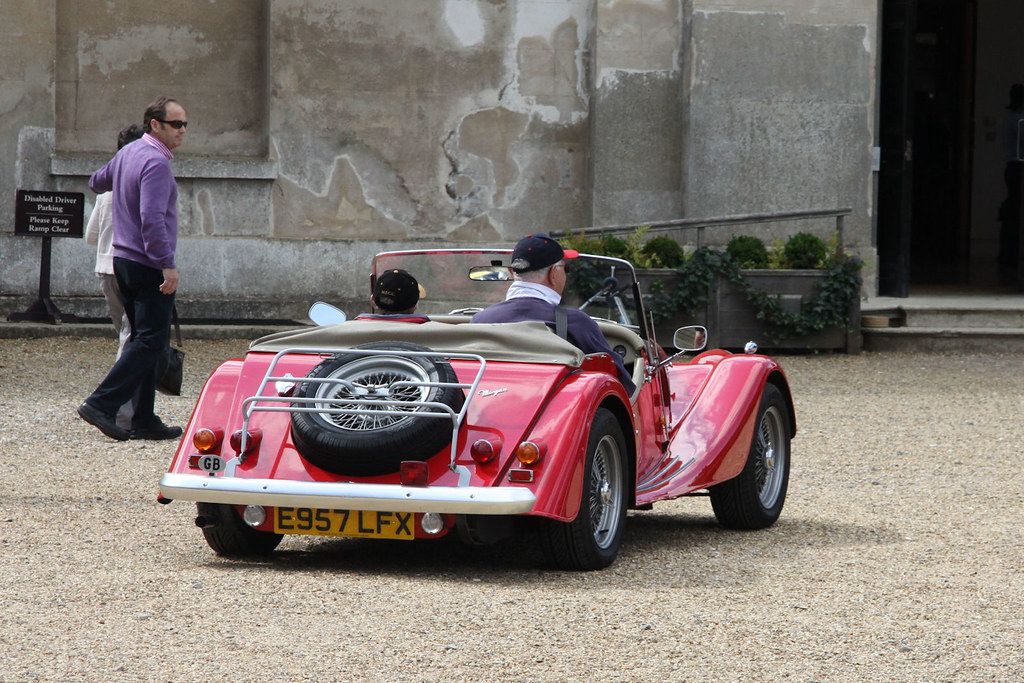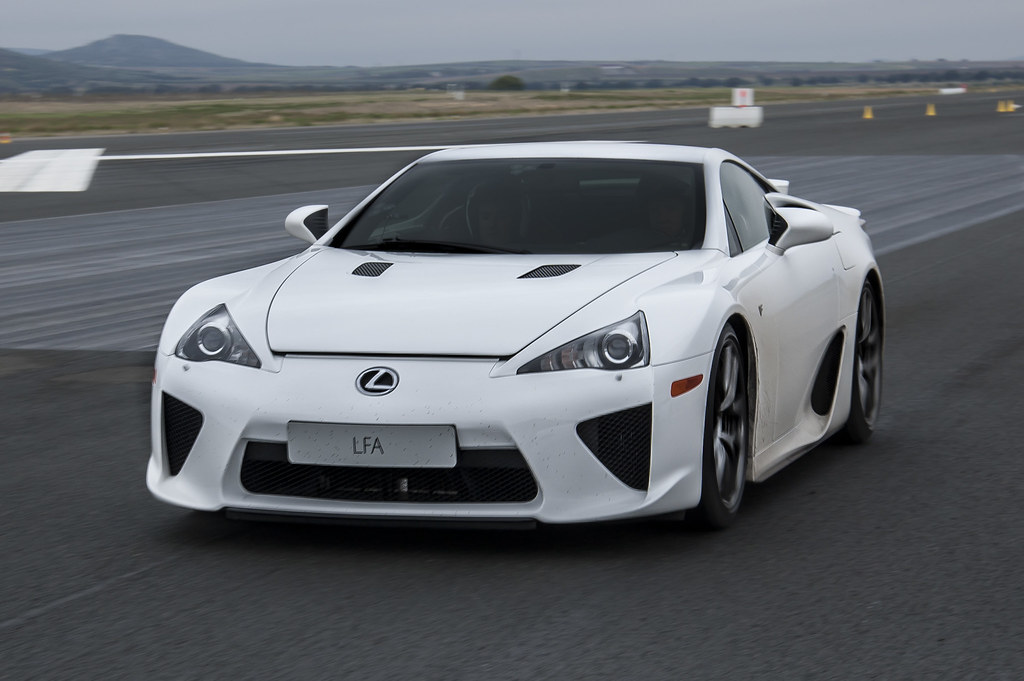
Alright, buckle up, fellow car enthusiasts and nostalgia-seekers! There’s just something about cars, isn’t there? They’re more than just metal and wheels; they’re time capsules, rolling statements of who we are, or at least who we *thought* we were. We all remember that one ride that made us feel invincible, like we were starring in our own action movie every time we hit the gas. The car that was undeniably, unquestionably *cool* in its prime.
But here’s the thing about cool: it’s a fickle beast. What’s in today can be utterly out tomorrow, and unfortunately, some of our automotive darlings didn’t age quite as gracefully as we might have hoped. What once turned heads with admiration can now elicit a quiet sigh or, let’s be honest, a full-blown cringe. It’s a bittersweet journey from showroom swagger to parking lot punchline, and trust us, it’s a trip worth taking.
So, prepare for a fascinating, perhaps slightly uncomfortable, dive into the annals of automotive history. We’re about to explore the first half of a dozen cars that started at the peak of popularity, burning bright as symbols of aspiration and style, only to witness their star fade, leaving behind a trail of awkward memories and questionable aesthetic choices. Get ready to confront some faded glories and maybe even acknowledge a few past questionable obsessions.
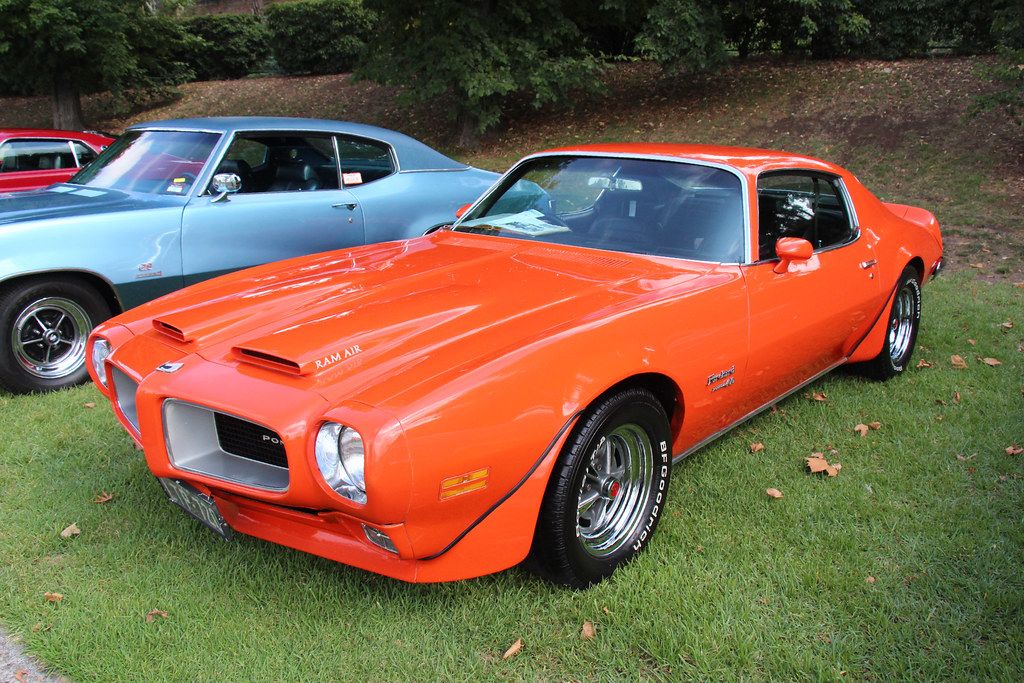
1. **Pontiac Firebird**Few cars genuinely scream ‘classic’ quite like the Pontiac Firebird. For decades, this wasn’t just a car; it was a bona fide legend, the absolute epitome of American muscle. It was a symbol of raw power on wheels, a roaring beast that embodied freedom and rebellion, making anyone behind the wheel feel like the coolest person on the planet. From its aggressive stance to its throaty exhaust note, the Firebird commanded respect and admiration.
Yet, as the years rolled on, so did the rust, both literally and figuratively, on its once-unblemished reputation. There came a point, somewhere along the line, when the Firebird sadly lost its scorching flame. This decline wasn’t entirely its fault; it was caught in the crosshairs of stricter emissions regulations that began to strangle the very essence of muscle car performance. The market itself was shifting, pushing for more practical, fuel-efficient vehicles rather than pure, unadulterated power machines.
The result? What once turned heads with a powerful, confident roar now just sighs wistfully into rearview mirrors. The later iterations struggled to live up to the glory of their predecessors, feeling watered down and less impactful. They became shadows of their former selves, struggling to find a clear identity in an increasingly competitive automotive landscape, a sad echo of the powerhouse it once was.
Despite its gradual descent into cringe for some, a powerful wave of nostalgia keeps its spirit very much alive in pop culture. The Firebird still races with the best of them in movies, TV shows, and video games, forever enshrined as an icon of a bygone era. For many, the memory of its peak is enough to overlook its later struggles, ensuring it remains a cherished, if sometimes awkwardly remembered, piece of automotive history.
Car Model Information: 1983 Pontiac Firebird Trans Am 2D Coupe
Name: Pontiac Firebird
Caption: The second, third, and fourth generations of,the Pontiac Firebird Trans Am
Manufacturer: Pontiac (automobile)
Production: February 23, 1967 – August 30, 2002
ModelYears: 1967 – 2002
Class: Pony car,Muscle car
Platform: GM F platform
Related: Chevrolet Camaro
Layout: Front engine, rear-wheel-drive layout
Categories: 1970s cars, 1980s cars, 1990s cars, 2000s cars, All articles with dead external links
Summary: The Pontiac Firebird is an American automobile built and produced by Pontiac from the 1967 to 2002 model years. Designed as a pony car to compete with the Ford Mustang, it was introduced on February 23, 1967, five months after GM’s Chevrolet division’s platform-sharing Camaro. This also coincided with the release of the 1967 Mercury Cougar, Ford’s upscale, platform-sharing version of the Mustang.
The name “Firebird” was also previously used by GM for the General Motors Firebird series of concept cars in the 1950s.
Get more information about: Pontiac Firebird
Buying a high-performing used car >>>
Brand: Pontiac Model: Firebird
Price: $22,991 Mileage: 38,257 mi.
Read more about: Beware These Cars: 10 Models with the Highest Depreciation Rates You Need to Know About
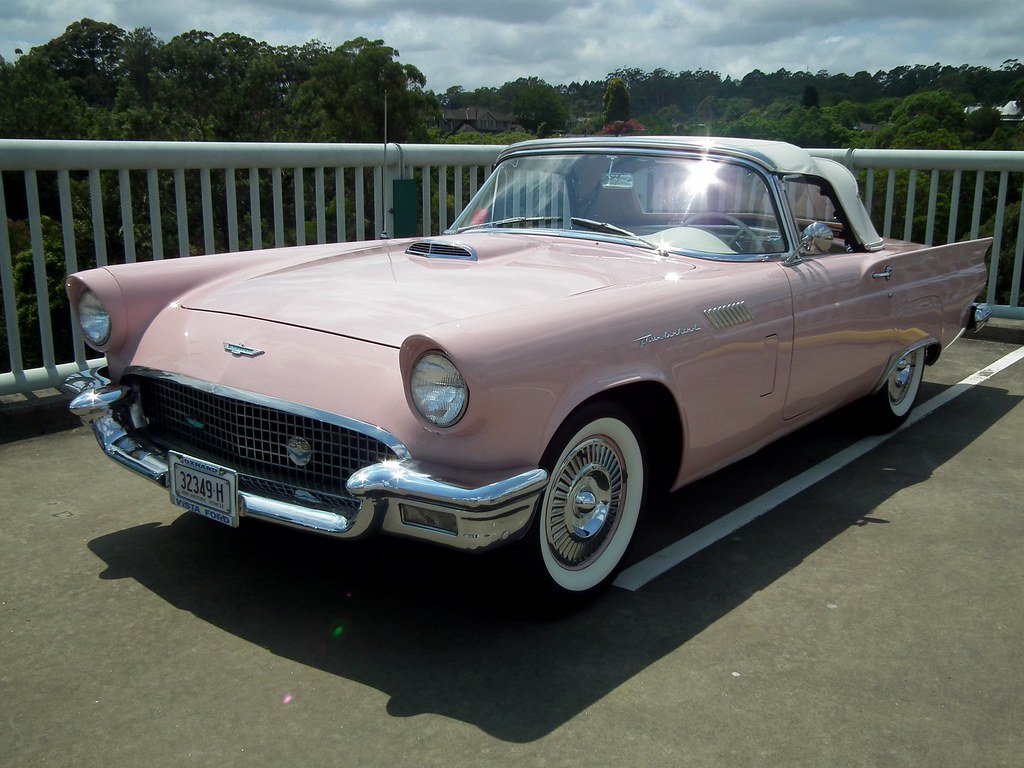
2. **Ford Thunderbird**The Ford Thunderbird, for a significant period, was nothing short of the darling of the open road. It wasn’t just a car; it was a statement, a sleek marvel of mid-20th-century innovation that oozed sophistication and effortless cool. Picture it: cruising down a coastal highway, top down, with that distinctive V8 rumble – it was the ultimate symbol of American luxury and aspiration, captivating drivers with its timeless elegance and powerful presence.
But then, as so often happens with things we adore, it tried to evolve. The Thunderbird, in its ambitious attempts to reinvent itself for new eras, found itself making some questionable design choices. Instead of continuing its soaring trajectory, its evolution took a rather dramatic nosedive into obscurity, marked by a series of what can only be described as uninspired redesigns. Each new iteration seemed to chip away at its iconic charm, leaving fans scratching their heads.
Over the decades, the Thunderbird fluttered through various guises, oscillating wildly from genuine luxury to something decidedly lackluster. It struggled, often quite visibly, to recapture the pure, unadulterated glory of its formative years. The styling became muddled, the performance less inspiring, and the sheer magic that once defined it seemed to vanish with each passing generation. It was a car that lost its way, unable to adapt without losing its soul.
For those who were fortunate enough to remember its heyday, their hearts still wax poetic about its commanding V8 rumble and its undeniable presence. These are the golden memories of a true classic. However, for today’s generations, who might only encounter its later, less charismatic forms, the Thunderbird is often seen gathering dust, a relic that simply never managed to keep pace with the times or regain its original spark. It’s a reminder that even automotive royalty can stumble.
Car Model Information: 2003 Ford Thunderbird Premium
Name: Ford Thunderbird
Caption: 1957 Thunderbird
Manufacturer: Ford Motor Company
Production: unbulleted list
ModelYears: unbulleted list
Class: unbulleted list
Layout: Front-engine, rear-wheel drive layout
Categories: 1960s cars, 1970s cars, 1980s cars, 1990s cars, 2000s cars
Summary: The Ford Thunderbird is a personal luxury car manufactured and marketed by Ford Motor Company for model years 1955 to 2005, with a hiatus from 1998 to 2001.
Ultimately gaining a broadly used colloquial nickname, the T-Bird, the model was introduced as a two-seat convertible, subsequently offered variously in a host of body styles including as a four-seat hardtop coupe, four-seat convertible, five-seat convertible and hardtop, four-door pillared hardtop sedan, six-passenger hardtop coupe, and five-passenger pillared coupe, before returning in its final generation, again as a two-seat convertible.
At its inception, Ford targeted the two-seat Thunderbird as an upscale model. The 1958 model year design introduced a rear seat and arguably marked the expansion of a market segment that came to be known as personal luxury cars, positioned to emphasize comfort and convenience over handling and high-speed performance.
Get more information about: Ford Thunderbird
Buying a high-performing used car >>>
Brand: Ford Model: Thunderbird
Price: $14,600 Mileage: 49,430 mi.
Read more about: Boomer Dream Machines: 14 Classic Car Icons Millennials Are Overlooking and Why They’re Missing the Mark
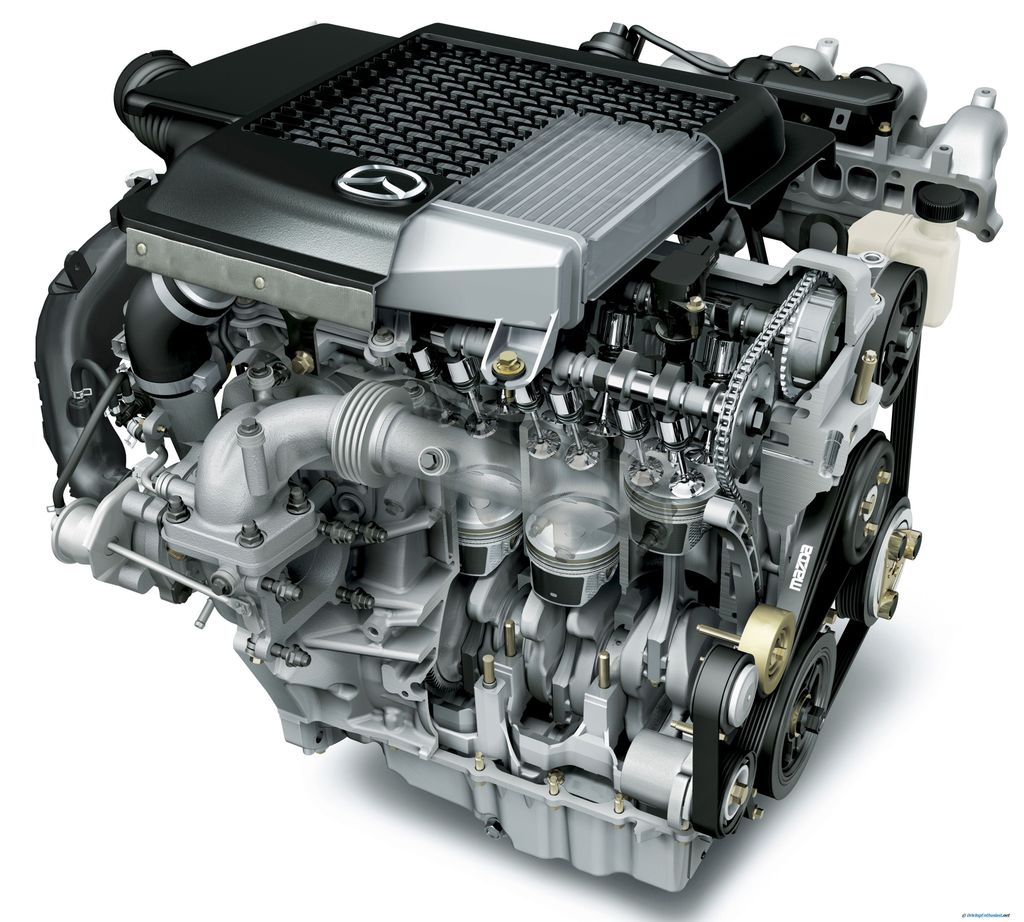
3. **Mitsubishi Eclipse**The original Mitsubishi Eclipse burst onto the scene as a legitimate sports car, quickly becoming a beloved compact choice known for its incredibly sharp styling and a performance punch that was surprisingly affordable. Young people, especially, flocked to it, drawn in by its sleek design and the promise of turbocharged engines that made them feel like legitimate street racers. It was a symbol of accessible speed and cutting-edge looks, perfectly capturing the spirit of a generation.
However, as the years progressed, something shifted dramatically within the Eclipse lineage. Over time, it became undeniably less exciting, losing that youthful edge that had made it so immensely popular in the first place. This was particularly evident with the later models, which seemed to abandon the very characteristics that had defined its initial success, morphing into something far less compelling. The raw, untamed spirit began to fade.
The final Eclipse, which rolled off the production lines in 2012, was a stark testament to this decline. It conspicuously lacked the innovation and the sheer flair of its earlier, more celebrated versions, effectively turning it into a bland, forgettable option within the highly competitive compact car market. It was no longer the car that sparked dreams of street racing; it was just another commuter, stripped of its identity.
It’s an interesting, almost ironic, fact that the Eclipse was a key player in the groundbreaking “Fast and Furious” franchise, with the second-generation specifically achieving iconic status through Brian O’Conner’s neon green ride. This initial burst of pop culture fame and desirability makes its later struggles and eventual loss of momentum all the more surprising, even a little heartbreaking, for fans who remember its explosive debut. It’s a car that truly lived two very different lives.
Car Model Information: 2007 Mitsubishi Eclipse Spyder GS
Name: Mitsubishi Eclipse
Caption: Fourth-generation Mitsubishi Eclipse GS coupe
Manufacturer: Mitsubishi Motors
Production: 1989–August 2011 (906,876 units)
ModelYears: 1990–2012
Assembly: Normal, Illinois
Class: Sports car
BodyStyle: liftback,coupé
Layout: Front-engine, front-wheel-drive layout,Front-engine, four-wheel-drive layout
Predecessor: Mitsubishi Cordia,Mitsubishi Starion
Categories: 1990s cars, 2000s cars, 2010s cars, All-wheel-drive vehicles, All articles with unsourced statements
Summary: The Mitsubishi Eclipse was a sport compact car manufactured and marketed by Mitsubishi over four generations in the 1990–2012 model years. A convertible body style was added during the 1996 model year.
The first two generations were marketed simultaneously as rebadged variants, including the Eagle Talon and Plymouth Laser — and were a byproduct of Mitsubishi Motors and Chrysler Corporation’s close alliance. Their partnership in turn gave rise to Diamond-Star Motors (DSM). In Japan, the first two generations were sold at a specific Japanese retail chain called Mitsubishi Car Plaza. The third, 2000–2005 generation shared an extended wheelbase variant of their platform with the Chrysler Sebring and Dodge Stratus. In May 2005, the fourth, and final generation Eclipse was introduced, replacing the Chrysler platform used for the third generation with the PS platform.
According to Mitsubishi, the Eclipse was named after an unbeaten 18th-century English racehorse that won 18 races in a row and then retired.
At the end of August 2011, the final Eclipse was manufactured and auctioned for charity.
In 2017, Mitsubishi resurrected the Eclipse name on a compact crossover vehicle, called the Eclipse Cross.
Get more information about: Mitsubishi Eclipse
Buying a high-performing used car >>>
Brand: Mitsubishi Model: Eclipse
Price: $5,500 Mileage: 115,000 mi.
Read more about: From Cool to Cringe: 15 Iconic Cars That Have Sadly Lost Their Shine and Now Make Us Wince
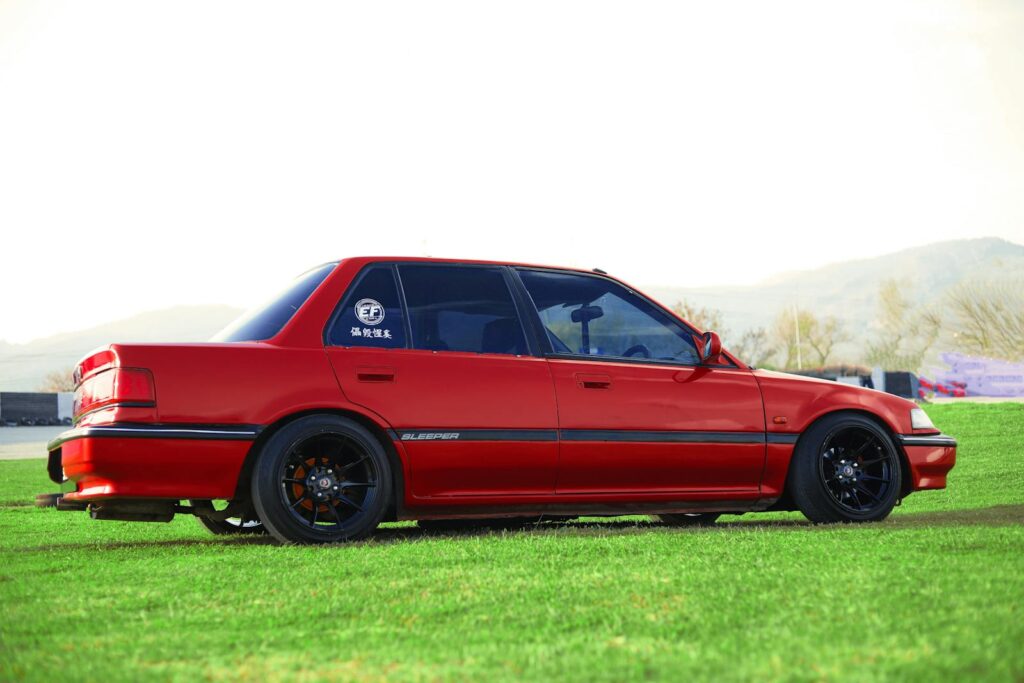
4. **Dodge Charger (FWD era)**Oh, the Dodge Charger. The very name once proudly embodied raw power, blistering speed, and an undeniable muscular presence. It was the quintessential American muscle car, a force to be reckoned with, designed to dominate the asphalt and stir the souls of driving enthusiasts. Its lineage was one of roaring V8s and tire-shredding performance, a true icon of automotive might and an absolute legend on the streets.
But then came its front-wheel-drive (FWD) era, and let’s just say, things got a little awkward. When this venerated muscle car made the controversial switch to front-wheel drive, it wasn’t just a design decision; it was a profound shift that left legions of devoted enthusiasts scratching their heads, feeling a profound sense of betrayal. It was as if a champion boxer suddenly decided to take up interpretive dance – admirable perhaps, but not what anyone expected or wanted.
Gone, tragically, was the brazen roar and the aggressive, rear-wheel-drive dynamics that defined its very essence. In their place was a whimper, a diluted driving experience that felt utterly out of character for a vehicle bearing such a legendary nameplate. This change wasn’t merely cosmetic; it marked a disheartening time when speedsters, in the name of practicality and fuel efficiency, seemed to settle for an uncomfortable mediocrity, sacrificing their soul for sensibility.
Thankfully, and to the immense relief of its fanbase, the Charger eventually found its way back to its rear-wheel-drive roots, reclaiming much of its lost glory with modern, powerful iterations. However, those FWD years remain a sobering and often-cited cautionary tale in automotive history, a stark reminder that sometimes, trying to be something you’re not can lead to a period of undeniable cringe, even for the mightiest of vehicles. It serves as a lesson in staying true to your brand’s core identity.
Car Model Information: 2023 Dodge Charger SRT Hellcat Widebody Jailbreak
Name: Dodge Charger
Caption: 1969 Dodge Charger
Manufacturer: Dodge
Production: 1966–1978,1981–1987,2005–present
ModelYears: 1966–1978,1982–1987,2006–present
Categories: 1960s cars, 1970s cars, 1980s cars, 2000s cars, 2010s cars
Summary: The Dodge Charger is a model of automobile marketed by Dodge in various forms over eight generations since 1966.
The first Charger was a show car in 1964. A 1965 Charger II concept car resembled the 1966 production version.
In the United States, the Charger nameplate has been used on mid-size cars, personal luxury coupes, subcompact hatchbacks, and full-size sedans.
Get more information about: Dodge Charger
Buying a high-performing used car >>>
Brand: Dodge Model: Charger
Price: $94,975 Mileage: 4,260 mi.

5. **Chevy Monte Carlo**For a considerable stretch of automotive history, the Chevy Monte Carlo was a quintessential staple of American muscle and undeniable luxury. Early models, in particular, were celebrated for their aggressive styling and the powerful engines that lay beneath their elegant hoods. It was a car that effortlessly blended performance with a certain upscale flair, becoming a beloved choice for those who wanted to cruise in style while still having ample power underfoot. It was a symbol of accessible cool, a car with real presence.
However, as the calendar pages turned and new millennia arrived, the Monte Carlo began an unfortunate descent into less relevance. Its later years, especially the iterations that emerged in the 2000s, failed to capture the magic of its predecessors. These models were widely considered underwhelming, struggling to evoke the same excitement and admiration that had once defined the nameplate. It was as if the spark that made it special had simply dimmed.
The final model, produced in 2007, was a particularly poignant example of this decline. It conspicuously lacked the raw power and the compelling appeal that had made the early Monte Carlos so iconic. Instead of standing tall as a proud continuation of its lineage, it felt like a shadow of its former self, an echo of a bygone era rather than a vibrant new chapter. The aggressive lines softened, and the performance became pedestrian.
Adding a bittersweet note to its story, the Monte Carlo name was officially retired after 2007. This decision marked the end of an era, making that final, rather lackluster version a somewhat melancholic farewell to what had once been a truly iconic nameplate in American automotive culture. It serves as a reminder that even the most cherished classics can, eventually, lose their way and fade into history.
Car Model Information: 2018 Honda Civic EX
Name: Chevrolet Monte Carlo
Manufacturer: Chevrolet
Production: 1969–1987,1994–2007
ModelYears: 1970–1988,1995–2007
Class: Personal luxury car
BodyStyle: coupé
Layout: FR layout
Caption: 2006 Chevrolet Monte Carlo LS
Categories: 1980s cars, 1990s cars, 2000s cars, All Wikipedia articles written in American English, All articles needing additional references
Summary: The Chevrolet Monte Carlo is a two-door coupe that was manufactured and marketed by the Chevrolet division of General Motors. Deriving its name from the city in Monaco, the Monte Carlo was marketed as the first personal luxury car of the Chevrolet brand. Introduced for the 1970 model year, the model line was produced across six generations through the 2007 model year, with a hiatus from 1989 until 1994. The Monte Carlo was a variant of the Pontiac Grand Prix throughout its production.
From 1970 until 1972, the Monte Carlo rode on the unique “A-Special” platform with the Grand Prix, shifting to the standard A-body intermediate chassis from the 1973 through 1977 model years. For 1978, the Monte Carlo line underwent downsizing, but was still considered a midsized coupe. The rear-wheel drive A-body platform of this generation of Monte Carlo was redesignated as the G-body when GM’s front-wheel drive A-body cars were introduced for the 1982 model year. After an abbreviated 1988 model year, the Monte Carlo was replaced by the two-door Chevrolet Lumina.
For the 1995 model year, the Monte Carlo was revived, replacing the two-door Lumina. It shared the front-wheel drive W-platform with the two-door Grand Prix, and was the largest coupe in the Chevrolet lineup. After the 2002 model year, the Grand Prix coupe was discontinued, the Monte Carlo became the largest two-door model produced by an American auto manufacturer.
In response to declining sales of the model line, Chevrolet discontinued the Monte Carlo after the 2007 model year. During much of its production, the Monte Carlo represented the Chevrolet brand in stock car racing. During the 1980s, the Monte Carlo SS was introduced, featuring aerodynamically enhanced styling; as part of its revival, the Monte Carlo again represented Chevrolet in stock car racing from 1995 through its discontinuation.
Get more information about: Chevrolet Monte Carlo
Buying a high-performing used car >>>
Brand: Chevy Model: Monte Carlo
Price: $19,974 Mileage: 64,299 mi.
Read more about: Consumer Alert: 15 Vehicles Mechanics Say You Must Avoid for Reliable, Worry-Free Driving
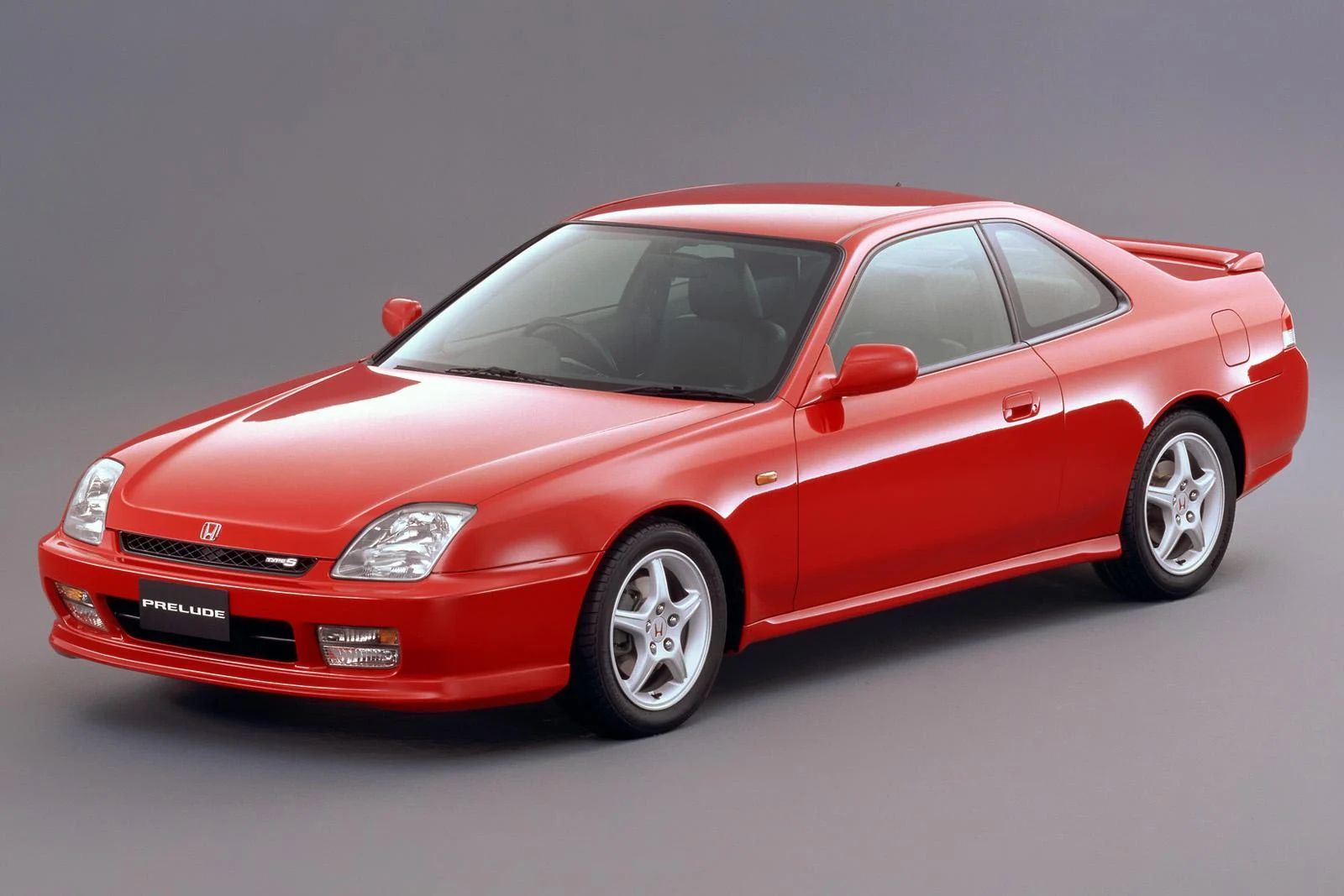
6. **Honda Prelude**The Honda Prelude, in its prime, didn’t just drive; it danced through the streets with an almost balletic grace and agility. It was more than just a car; it was a nimble contender in the highly competitive sports coupe arena, celebrated for its precision handling and a design that was both elegant and understatedly sporty. Enthusiasts adored it for its balanced chassis, responsive steering, and the sheer joy it brought to driving, making it a benchmark for front-wheel-drive performance.
Yet, as time inexorably marched forward, the Prelude’s once-exquisite dance began to unfortunately devolve into a mere shuffle. The automotive landscape was rapidly changing, with new, flashier rivals constantly emerging, pushing the boundaries of technology and design. The Prelude, for all its inherent quality, found itself struggling to keep pace, its once-cutting-edge features becoming less remarkable in comparison to the relentless innovation around it.
As the Prelude aged through its various generations, it became increasingly apparent that it was having difficulty adapting to the evolving tastes and demands of the market. It eventually, and rather gracefully, bowed out in the early 2000s, quietly exiting the stage after a distinguished but ultimately outmoded run. Its departure marked the end of an era, a bittersweet moment for those who understood its true brilliance.
Even now, long after its discontinuation, dedicated fans still reminisce with genuine fondness about its legendary precision handling and its truly incredible, often understated, design. They recall the purity of its driving experience and the quality of its engineering. But despite this enduring affection, the Prelude undeniably remains a poignant testament to an era that has passed, a beloved icon whose time simply ran out, making it a ‘cool’ car that, for many, now evokes a wistful sense of what once was rather than what currently commands the road.
Alright, car fam, if you thought the first six were a wild ride, buckle up because we’re diving even deeper into the automotive hall of shame – or perhaps, the hall of *what were they thinking?* Sometimes, even the best intentions in car design can take a hard left turn into awkward territory. We’re talking about those rides that, despite their initial shine, ended up making us wonder if we’d accidentally time-traveled to a garage sale of questionable choices. Let’s not waste another second; it’s time for the final plunge into once-cool cars that became cringe-worthy!
Car Model Information: 2001 Honda Prelude Type SH
Name: Honda Prelude
Caption: 1998 Honda Prelude VTi (BB6) in the UK
Manufacturer: Honda
Production: November 1978 – October 2001,2025 (to commence)
Class: Sport compact car
Layout: Front-engine, front-wheel-drive
BodyStyle: liftback,coupe
Assembly: Sayama, Saitama
Categories: 1980s cars, 1990s cars, 2000s cars, 2020s cars, All articles lacking reliable references
Summary: The Honda Prelude (Japanese: ホンダ・プレリュード, Hepburn: Honda Pureryūdo) is a sport compact car produced by the Japanese company Honda. It was once produced over five generations from 1978 to 2001. It is planned to be reintroduced in 2025.
For the first five generations, as a two-door coupe loosely derived from the Accord, the Prelude was the first Honda to feature a moonroof, a feature that remained standard equipment throughout its production.
The Prelude was used by Honda to introduce the Japanese Honda retail sales chain Honda Verno, with the international release of the model following shortly after. The Prelude’s manufacture concluded in 2001 on introduction of the fourth-generation Integra. The Prelude name was originally trademarked by Toyota, but was amicably given to Honda for use.
The Prelude’s nameplate aligned with a series of music-themed nameplates in use by Honda, including the Accord, Quintet, Concerto, Jazz, and Ballade.
Get more information about: Honda Prelude
Buying a high-performing used car >>>
Brand: Honda Model: Prelude
Price: $67,827 Mileage: 4,940 mi.
Read more about: America’s Used Car Market Revealed: Are You Driving One of the Top 15 Most Popular Models?
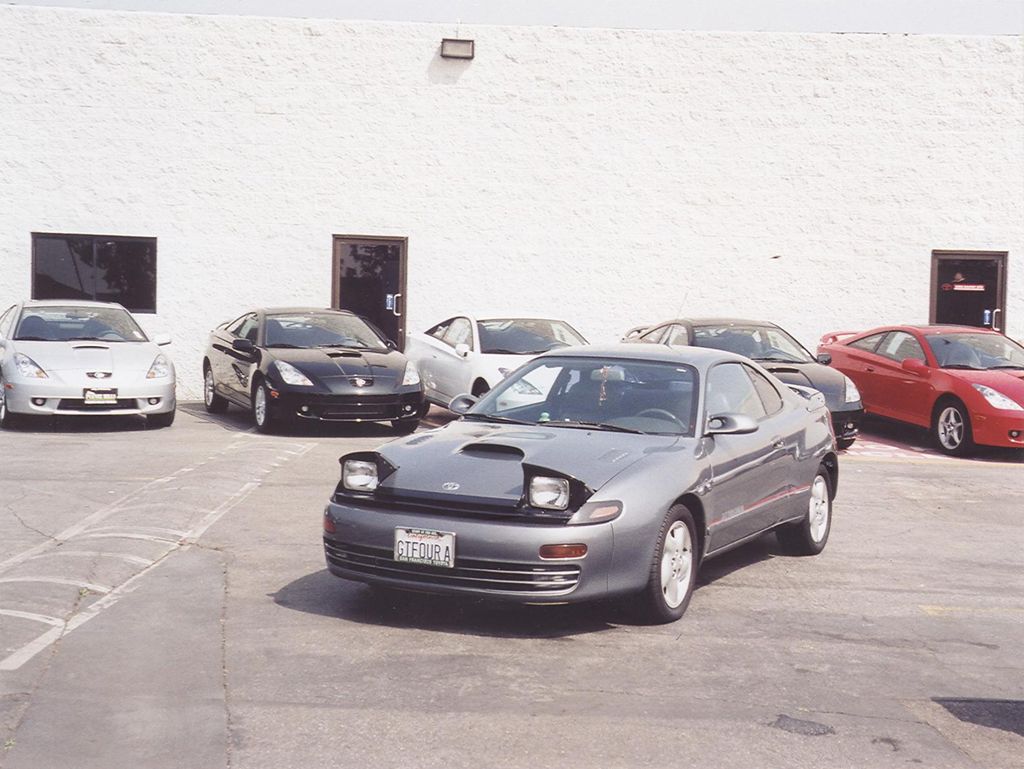
7. **Toyota Celica**For decades, the Toyota Celica was like that effortlessly cool friend who always knew how to make an entrance. It wasn’t just a car; it was a bona fide sports car, celebrated across generations for its incredible agility and an appeal that just screamed ‘sporty.’ Picture yourself carving up winding roads, feeling every nuance of its sharp handling – that was the Celica in its prime, a true delight for drivers who appreciated precision and fun.
But here’s where the plot thickens, or rather, thins out. As the calendar pages turned and the Celica tried to keep up with the ever-changing automotive landscape, something started to shift. Especially towards the twilight of its production in 2005, it began to shed much of that original, undeniable charm that had made it such a beloved icon. It was like watching a star performer slowly lose their sparkle on stage – you knew the talent was there, but the magic just wasn’t the same.
The later models really drove this point home, literally. They seemed to pivot, becoming more about flash and less about genuine performance. What was once a car praised for its exciting and sharp handling started to feel a bit watered down, focusing more on aesthetics than the raw, engaging driving experience we all loved. It became a compact sports coupe, which sounds nice, but it wasn’t the performance car it once was, and that’s where the cringe starts to creep in for purists.
It’s an interesting little tidbit from its history: those final years really marked a significant strategic shift. The Celica moved away from being that hardcore performance machine and leaned into a softer, more compact sports coupe vibe. It was a subtle change that, unfortunately, dulled its competitive edge and left many long-time fans longing for its more spirited past.
Car Model Information: 2003 Toyota Celica GT
Name: Toyota Celica
Caption: 1994 Toyota Celica GT-Four (ST205, UK)
Manufacturer: Toyota
Production: December 1970
ModelYears: 1971–2005
Assembly: Susono,Shizuoka Prefecture
Class: Sports car
BodyStyle: unbulleted list
Layout: unbulleted list
Categories: 1980s cars, 1990s cars, 2000s cars, Accuracy disputes from August 2020, All-wheel-drive vehicles
Summary: The Toyota Celica ( or ) (Japanese: トヨタ・セリカ, Hepburn: Toyota Serika) is an automobile produced by Toyota from 1970 until 2006. The Celica name derives from the Latin word coelica meaning heavenly or celestial. In Japan, the Celica was exclusive to Toyota Corolla Store dealer chain. Produced across seven generations, the Celica was powered by various four-cylinder engines, and body styles included convertibles, liftbacks, and notchback coupé.
In 1973, Toyota coined the term liftback to describe the Celica fastback hatchback, and the GT Liftback would be introduced for the 1976 model year in North America. Like the Ford Mustang, the Celica concept was to attach a coupe body to the chassis and mechanicals from a high volume sedan, in this case the Toyota Carina.
The first three generations of North American market Celicas were powered by variants of Toyota’s R series engine. In August 1985, the car’s drive layout was changed from rear-wheel drive to front-wheel drive, and all-wheel drive turbocharged models were manufactured from October 1986 to June 1999. Variable valve timing came in certain Japanese models starting from December 1997 and became standard in all models from the 2000 model year. In 1978, a restyled six-cylinder variant was introduced as the Celica Supra (Celica XX in Japan); it would be spun off in 1986 as a separate model, becoming simply the Supra. Lightly altered versions of the Celica were also sold through as the Corona Coupé through the Toyopet dealer network from 1985 to 1989, and as the Toyota Curren through the Vista network from 1994 to 1998.
Get more information about: Toyota Celica
Buying a high-performing used car >>>
Brand: Toyota Model: Celica
Price: $2,000 Mileage: 233,382 mi.
Read more about: Pure Automotive Gold: 14 Masterpiece Cars from the 1960s That Still Reign Supreme
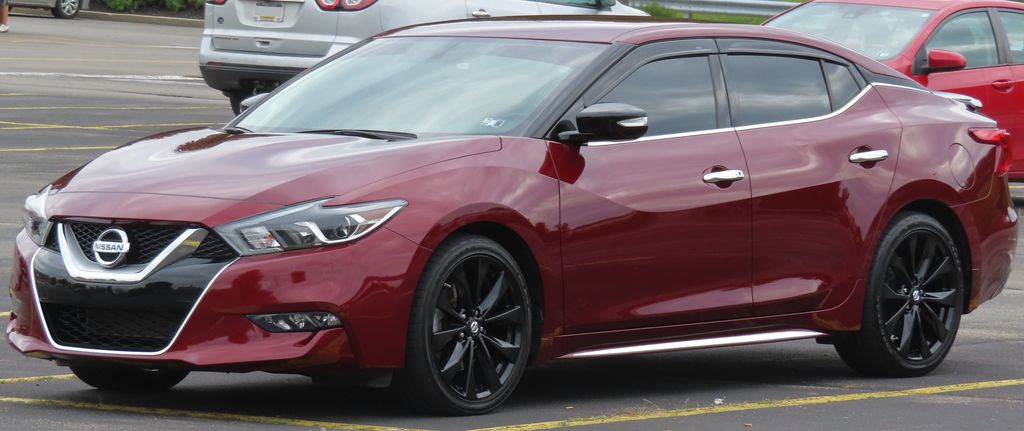
8. **Nissan Maxima**Ah, the Nissan Maxima! There was a time when this bad boy wasn’t just a sedan; it proudly carried the moniker of a ‘four-door sports car.’ And honestly, it lived up to it! It was the kind of car that offered the perfect trifecta: speed, practicality, and undeniable style. You could haul the family, cruise on the highway, and still feel that sporty thrill behind the wheel – it was genuinely a jack-of-all-trades, a true road warrior in a suit.
But alas, even legends can stumble. Over the years, that sharp, sporty edge that made the Maxima so special started to dull, like a once-razor-sharp blade that just couldn’t hold its keenness anymore. What was once a standout performer gradually morphed into something more… well, *average*. It became just another sedan in a sea of sedans, losing that distinctive roar and aggressive stance that made it uniquely Maxima.
It truly transformed from a legitimate road warrior into, let’s be frank, a rather ordinary commuter. That isn’t to say it became a *bad* car, but it certainly lost the spark that gave it its legendary title. For those of us who remember its glory days, it’s a bit of a wistful thought, seeing it shed its performance aspirations for something far more subdued.
Despite this somewhat sad descent, there’s still a dedicated fanbase out there, long-time fans who hold onto those cherished memories. They wax poetic about a time when the Maxima roared proudly on the highways, reminding us all that beneath its later, more sedate exterior, a true sports car heart once beat strong. It’s a testament to its former greatness, even if today’s version doesn’t quite live up to the legend.
Car Model Information: 2022 Nissan Maxima SV
Manufacturer: Nissan
Aka: Datsun Maxima (1980–1984)
Production: 1980–2023
ModelYears: 1981–2023
Class: Mid-size (1981–2003),Full-size (2004–2023)
Layout: Front-engine, rear-wheel-drive
Predecessor: Datsun 810
Caption: 2021 Nissan Maxima SV (A36; US)
Categories: 1990s cars, 2000s cars, 2010s cars, 2020s cars, All articles with dead external links
Summary: The Nissan Maxima is a five-passenger, front-engine, front-drive sedan that was manufactured and marketed by Nissan as Nissan’s flagship sedan primarily in North America, the Middle East, South Korea, and China — across eight generations. The Maxima debuted for model year 1982 as the Datsun Maxima, replacing the Datsun 810.
The Maxima was marketed as an upscale alternative to the Altima and prior to 1993, the Stanza, distinguished by features such as a premium interior and V6 engine. Most Maximas were built in Oppama, Japan, until North American assembly began in Smyrna, Tennessee, for the 2004 model year.
For the US and Canada, Nissan ended production of the Maxima in July 2023.
Outside North America, the Maxima nameplate has also been applied to variants or trim levels of several other models.
Get more information about: Nissan Maxima
Buying a high-performing used car >>>
Brand: Nissan Model: Maxima
Price: $17,500 Mileage: 70,772 mi.
Read more about: Buyer Beware: These 10 Popular Cars Are Known Money Pits After 100,000 Miles, According to Automotive Experts

9. **Volkswagen Beetle (New Beetle era)**The Volkswagen Beetle, particularly in its ‘New Beetle era,’ burst onto the scene with a splash, aiming to recapture the magic of its iconic predecessor. It was a modern take on a beloved classic, designed to be cute, quirky, and utterly charming, instantly attracting a whole new generation of fans. Everyone wanted to be seen in one, especially with that adorable flower vase on the dashboard! It felt fresh, friendly, and perfectly suited for anyone wanting to stand out from the boring sedan crowd.
However, as the novelty of its retro charm started to wear off, so did the Beetle’s appeal. What was once seen as a quirky and nostalgic tribute began to feel more like a bit of a gimmick. It was like that one outfit you loved, but after wearing it too many times, it just didn’t hit the same anymore. The initial excitement gave way to a general sense of ‘meh,’ especially as sales started to dwindle in the 2010s.
The charm faded, and the car itself struggled to evolve past its initial retro-futuristic styling. It became associated with a particular demographic, and as tastes changed, the New Beetle found itself looking increasingly dated and, dare we say, a bit too ‘girly’ for a broader audience. This pigeonholing didn’t help its cause in a market that craved versatility and updated aesthetics.
It’s a bittersweet ending for such a hopeful revival: despite all the initial hype and adoration, the Beetle was officially discontinued in 2019. This marked the quiet conclusion of a nearly 70-year legacy for one of the most recognizable cars on the planet. It’s a poignant reminder that even the most beloved icons need to keep reinventing themselves, or risk becoming merely a charming, albeit cringe-inducing, relic of the past.
Car Model Information: 1968 Volkswagen Beetle (Pre-1980) Base
Sp: uk
Name: Volkswagen Type 1,”Beetle”
Caption: 1965–1966 Volkswagen Käfer
Manufacturer: Volkswagen
Alt: A front-three quarters view of a pale-yellow Volkswagen Käfer. It features 165/80R15 tires, which shod 15×4. 5″ silver, circular wheels. The Käfer features a beetle-like body, and its window is open. The picture is taken with much greenery in the background, and the photo was edited to give it a more warmer tone.
Aka: List of names for the Volkswagen Type 1
Assembly: #Markets and assembly
Designer: Ferdinand Porsche
Class: Small family car
BodyStyle: Sedan (automobile),convertible
Production: 1938–2003,21,529,464 produced
Successor: Volkswagen Golf Mk1,Volkswagen Gol#First generation (Typ30, 1980),Volkswagen New Beetle
Layout: Rear-engine, rear-wheel-drive layout
Engine: Petrol,Volkswagen air-cooled engine,1192 cc H4,1285 cc H4,1493 cc H4,1584 cc H4
Transmission: manual transmission,Saxomat,Autostick
Wheelbase: convert
Length: convert
Width: convert
Height: 1500 mm
Abbr: on
Weight: convert
Categories: 1940s cars, 1950s cars, 1960s cars, 1970s cars, 1980s cars
Summary: The Volkswagen Beetle, officially the Volkswagen Type 1, is a small family car produced by the German company Volkswagen from 1938 to 2003. Considered a global cultural icon, the Beetle is widely regarded as one of the most influential cars of the 20th century. Its production period of 65 years is the longest of any single generation of automobile, and its total production of over 21.5 million is the most of any car of a single platform and the second-most of any nameplate produced in the 20th century.
The Beetle was conceived in the early 1930s. The leader of Nazi Germany, Adolf Hitler, decided there was a need for a people’s car—an inexpensive, simple, mass-produced car—to serve Germany’s new road network, the Reichsautobahn. The German engineer Ferdinand Porsche and his design team began developing and designing the car in the early 1930s, but the fundamental design concept can be attributed to Béla Barényi in 1925, predating Porsche’s claims by almost ten years. The result was the Volkswagen Type 1 and the introduction of the Volkswagen brand. Volkswagen initially slated production for the late 1930s, but the outbreak of war in 1939 meant that production was delayed until the war had ended. The car was originally called the Volkswagen Type 1 and marketed simply as the Volkswagen. It was not until 1968 that it was officially named the “Beetle”.
Volkswagen implemented designations for the Beetle in the 1960s, including 1200, 1300, 1500, 1600, 1302, and 1303. Volkswagen introduced a series of large luxury models throughout the 1960s and 1970s—comprising the Type 3, Type 4 and K70—to supplement the Beetle, but none of these models achieved the level of success that it did. Rapidly changing consumer preferences toward front-wheel drive compact hatchbacks in Europe prompted Volkswagen’s gradual shift away from rear-wheel drive, starting with the Golf in 1974. In the late 1970s and ’80s, Japanese automakers began to dominate some markets around the world, which contributed to the Beetle’s declining popularity.
Over its lifespan, the Beetle’s design remained consistent, yet Volkswagen implemented over 78,000 incremental updates. These modifications were often subtle, involving minor alterations to its exterior, interior, colours, and lighting. Some more noteworthy changes included the introduction of new engines, models and systems, such as improved technology or comfort. The Beetle maintains a substantial cultural influence and is regarded as one of the most iconic vehicles in automotive history; its success largely influenced the way automobiles are designed and marketed, whilst propelling Volkswagen’s introduction of a Golf-based series of vehicles.
Get more information about: Volkswagen Beetle
Buying a high-performing used car >>>
Brand: Volkswagen Model: Beetle
Price: $24,999 Mileage: 1,799 mi.
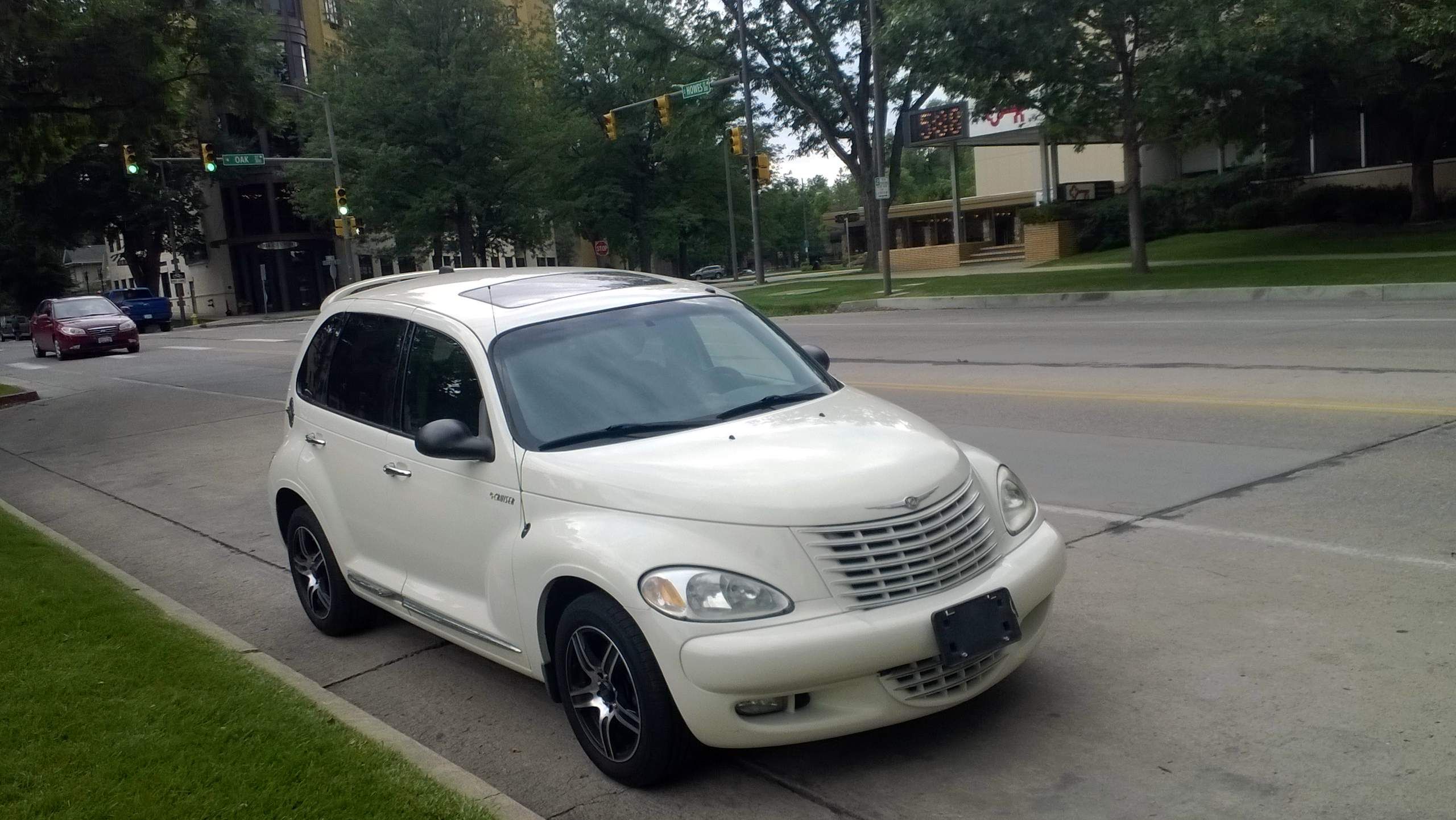
10. **Chrysler PT Cruiser**The Chrysler PT Cruiser, oh boy, what a ride it was! It landed on the automotive scene with a distinct mission: to perfectly blend vintage charm with all the modern conveniences we crave. When it first rolled out, it was an absolute hit, with its gangster-era styling making heads turn everywhere. People were genuinely smitten with its unique, retro design, seeing it as a symbol of individualism in a sea of increasingly similar-looking cars. It truly felt like a blast from the past, but with a fresh, contemporary twist.
Yet, as is often the case with anything too unique, its design quickly became polarizing. What was initially considered refreshingly cool and avant-garde by some, very rapidly started to look, well, a bit kitschy to others. It was as if the automotive world had a collective eye-roll moment, and the ‘cool’ factor evaporated faster than a puddle in the summer sun. The quirky charm that was its biggest selling point suddenly became its most ridiculed feature.
And just like that, the novelty wore off, taking the PT Cruiser’s soaring popularity right along with it. Sales plummeted, and what was once a darling of the car shows became a punchline on countless ‘worst car’ lists. It went from being a bold statement to a rather awkward conversation starter, struggling to find its place once the initial buzz died down.
Today, the PT Cruiser stands as a curious monument, a vivid reminder of the early 2000s’ undeniable fascination with retro revivals. It’s a car that, for better or worse, will forever symbolize a moment in time when designers dared to be different, even if that difference eventually led to an undeniable cringe factor for many. It’s truly a car that proves beauty is in the eye of the behramer, and that sometimes, what goes up, must come down, especially in the fickle world of automotive trends.
Car Model Information: 2018 Honda Civic EX
Name: Chrysler PT Cruiser
Manufacturer: Chrysler
ModelCode: PT,PG
Production: 2000–2010
ModelYears: 2001–2010
Assembly: Toluca
Designer: Bryan Nesbitt
Class: Compact car
BodyStyle: convertible
Platform: Chrysler PT platform
Related: Dodge Neon
Predecessor: Dodge Neon
Successor: Lancia Delta#Third generation
Layout: Front-engine, front-wheel-drive layout
Engine: ubl
Transmission: Ultradrive#40TE
Wheelbase: 103 in
Abbr: on
Length: 168.8 in
Width: 67.1 in
Height: 63 in
Weight: 3123 lb
Categories: 2010s cars, All articles with unsourced statements, Articles with short description, Articles with unsourced statements from March 2018, Cars discontinued in 2010
Summary: The Chrysler PT Cruiser is a compact car that was built by the American company Chrysler from 2001 until 2010. Introduced as a five-door hatchback wagon, a two-door convertible variant was also made from 2005 until 2008.
Originally planned as a Plymouth model, the PT Cruiser was ultimately marketed as a Chrysler when Plymouth was discontinued. Intended to invoke 1930s aesthetics, the exterior of the PT Cruiser was designed by Bryan Nesbitt. The model received an intermediate facelift for the 2006 model year. Interior packaging was noted for its high roof, high h-point seating, and flexible cargo and passenger configurations enabled by a multi-level rear cargo shelf and rear seats a user could fold, tumble, or remove.
The PT Cruiser was produced in Mexico and Austria at the Toluca Car Assembly and Eurostar Automobilwerk factories respectively. By the end of production in July 2010, worldwide production had reached 1.35 million.
In its nameplate, PT stands for “Personal Transport” or “Personal Transportation”. PT was the PT Cruiser’s product code for the Mexican-made units.
Get more information about: Chrysler PT Cruiser
Buying a high-performing used car >>>
Brand: Chrysler Model: PT Cruiser
Price: $19,974 Mileage: 64,299 mi.
Read more about: From Cool to Cringe: 15 Iconic Cars That Have Sadly Lost Their Shine and Now Make Us Wince
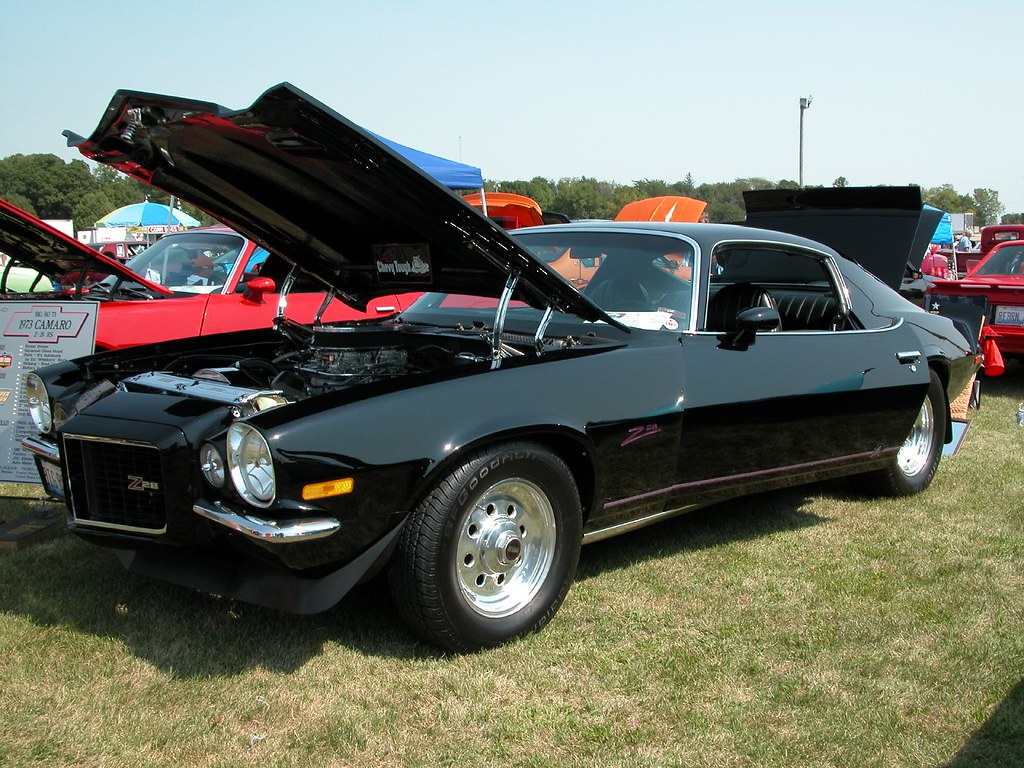
11. **Chevy Camaro (early 2000s)**For anyone who grew up with posters of muscle cars plastered on their bedroom walls, the Chevy Camaro name evokes images of roaring engines and tire-shredding power. But let’s be honest, the early 2000s era for the Camaro was, shall we say, a bit of a rough patch. It was a period where this legendary beast seemed to really struggle to reclaim its former glory, barely limping along before its production eventually ended in 2002. It was a sad sight for such a celebrated nameplate.
While the much-anticipated 2010s revival brought back the iconic, aggressive look and much of the muscle car’s legendary swagger, those earlier years in the 2000s were, frankly, less than inspiring. It felt like a shadow of its former self, lacking the raw power, the undeniable appeal, and the sharp, head-turning styling that had defined generations of Camaros. It was a rather lackluster performance from a car expected to dominate.
Indeed, it just didn’t hit the mark. The early 2000s Camaro felt watered down, suffering from uninspiring styling choices and a performance that, by muscle car standards, was decidedly lackluster. It was a far cry from the tire-smoking legends of the past and the triumphant return that would come later. For fans, it was a period of quiet disappointment, hoping for more from their beloved icon.
It’s a stark, interesting fact that the early 2000s Camaro’s final year before its discontinuation was widely considered a low point for the muscle car’s legendary nameplate. It was a moment where an icon seemed to lose its way, reminding us that even the mightiest vehicles can falter and lose their cool factor when they stray too far from their core identity.
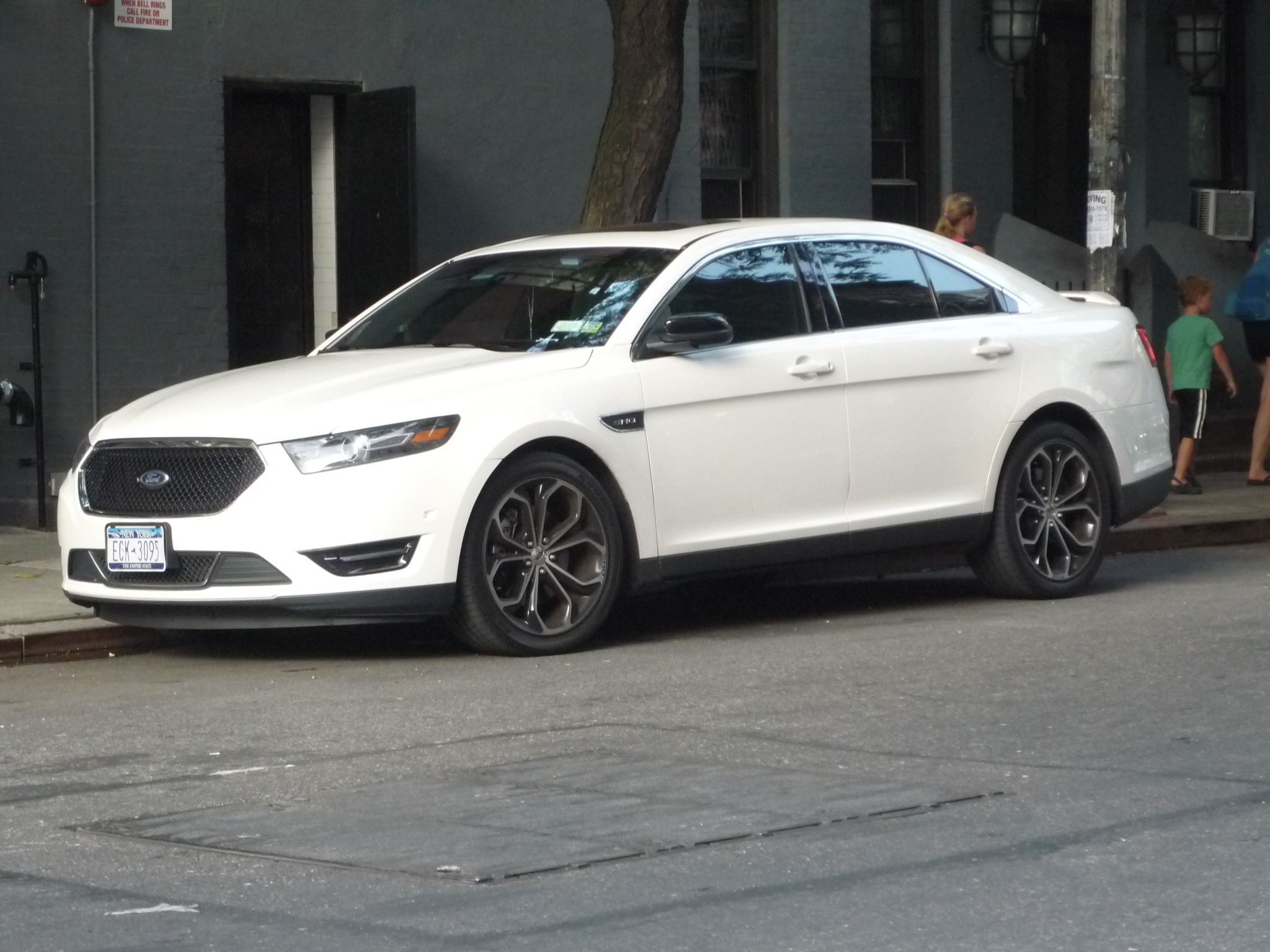
12. **Ford Taurus**Once upon a time, not so long ago, the Ford Taurus wasn’t just *a* car; it was *the* car. For a glorious period, it reigned supreme as America’s best-selling car, the quintessential family sedan that, genuinely, seemed like it could do no wrong. It was the dependable, practical, and surprisingly stylish choice for suburban families across the nation, truly embodying the spirit of accessible automotive excellence. It was the sensible hero of every driveway.
But as we all know, even the most enduring dynasties eventually face challengers, and alas, times changed for the mighty Taurus. The automotive landscape shifted dramatically, and the competition grew fiercely intense. Suddenly, every car manufacturer was upping their game, pushing the boundaries of innovation and style, and the Taurus found itself struggling to keep pace.
It began to fall behind, losing its cutting edge in design and technological advancements. What was once revolutionary became, well, a bit ordinary, and eventually, it lost its iron grip on market dominance. It was a slow, sometimes painful, descent from the top, as newer, flashier, and more innovative rivals started to steal its thunder.
And yet, despite its eventual fall from grace, the Ford Taurus still holds a surprisingly warm and fuzzy place in countless suburban memories. For many, it remains a cherished symbol of practicality, reliability, and that comforting sense of normalcy from a bygone era. It might have slipped from its ‘coolest car on the block’ status to a more nostalgic, slightly cringe-worthy memory, but its legacy as the ultimate family workhorse endures, a testament to a time when dependability was truly king.
Car Model Information: 2017 Ford Taurus Limited
Name: Ford Taurus
Caption: 2010 Ford Taurus Limited
Manufacturer: Ford Motor Company
Production: October 1985 – October 2006,May 2007 – March 2019
ModelYears: 1986–2019 (2007 sold only to fleets)
Class: Mid-size car
Layout: Transverse engine,front-engine, front-wheel drive,Transverse engine,front-engine, all-wheel drive
Predecessor: Ford LTD (North America)
Successor: Ford Taurus X
Categories: 1980s cars, 1990s cars, 2000s cars, 2010s cars, All-wheel-drive vehicles
Summary: The Ford Taurus is an automobile that was manufactured and marketed by the Ford Motor Company in the United States from 1985 to 2019. From 1985 to 2009, Ford marketed the Taurus alongside its rebadged variant, the Mercury Sable. Four generations of the high-performance version (named the Ford Taurus SHO) were also manufactured from 1988-1999 and 2009-2019.
The original Taurus was a milestone for Ford and the American automotive industry, as the first automobile at Ford designed and manufactured using the statistical process control ideas brought to Ford by W. Edwards Deming, a prominent statistician consulted by Ford to bring a “culture of quality” to the enterprise. The Taurus had an influential design that introduced new features and innovations.
In the late 1990s and early 2000s, sales of the Taurus declined as it lost market share to Japanese mid-size sedans and as Ford shifted resources towards developing SUVs. The Taurus was withdrawn after the 2007 model year, with production ending on October 27, 2006. As part of a model line revision, the Taurus and the larger Ford Crown Victoria were to be replaced with the full-size Five Hundred and mid-size Fusion sedans; the Taurus station wagon was replaced with the Ford Freestyle wagon, branded as a crossover SUV. During the 2007 Chicago Auto Show, the nameplates of the Taurus and Sable were revived, intended as 2008 mid-cycle revisions of the Five Hundred. The Freestyle was renamed the Ford Taurus X. For the 2010 model year, Ford introduced the sixth-generation Taurus, marking a more substantial model update, alongside the revival of the Taurus SHO; in 2013, the Ford Police Interceptor Sedan was introduced as a successor for its long-running Crown Victoria counterpart.
From 1985 to 2007, the Taurus was a mid-size car, offering front-wheel drive. Initially built on the DN5 platform (renamed the DN101 platform in 1995 and the D186 platform in 1999), the Taurus became a full-size car in 2007, adopting the Volvo-derived D3 platform, offering front- or all-wheel drive. The Taurus was produced as a four-door sedan through its entire production, with a five-door station wagon offered from 1986 to 2005.
All generations of the Taurus were assembled by Chicago Assembly on Chicago’s South Side. Prior to its 2006 closure, Atlanta Assembly also produced both the Taurus and Sable. From its 1985 launch to its initial withdrawal following the 2007 model year, Ford assembled 7,519,919 examples of the Taurus. The fifth best-selling Ford nameplate in North America, the Taurus has been surpassed only by the F-Series, Escort, Model T, and Mustang. Between 1992 and 1996, the Taurus was the best-selling car nameplate in the United States, overtaken by the current title holder in 1997, the Toyota Camry.
Get more information about: Ford Taurus
Buying a high-performing used car >>>
Brand: Ford Model: Taurus
Price: $18,676 Mileage: 73,425 mi.
Read more about: Consumer Alert: 15 Vehicles Mechanics Say You Must Avoid for Reliable, Worry-Free Driving
So, there you have it, folks! Another deep dive into the sometimes-confusing, often-hilarious, and always-fascinating world of cars that went from zero to hero and back again – or in these cases, from cool to a bit of a head-scratcher. It’s a wild ride, isn’t it, seeing how quickly public perception can flip, how yesterday’s must-have can become today’s ‘oh, no thank you.’ But honestly, that’s what makes car culture so endlessly entertaining. These vehicles, in their own unique ways, remind us that trends are fleeting, and true character often lies in the eye of the beholder. Who knows, maybe one day we’ll be looking back at some of today’s hottest rides and having a good chuckle. Until then, keep those wheels spinning and those opinions rolling!


